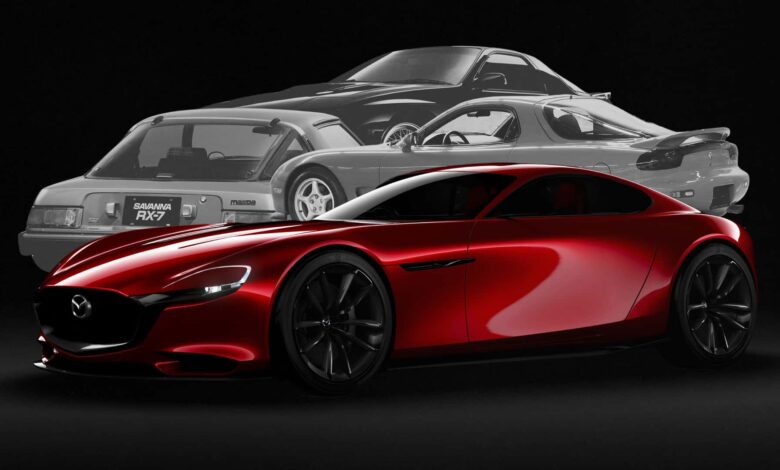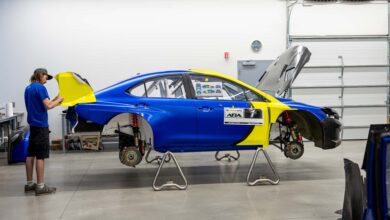Mazda Nearly Built a New RX-7. The 2008 Financial Crisis Killed It

[ad_1]
Since its cancellation in 2002, the world has longed for a new Mazda RX-7. Mazda itself wanted one, too, twinned with the fourth-generation Miata, but the 2008 financial crisis put plans on ice.
Motor1 spoke with Nobuhiro Yamamoto, the recently retired former project manager for the ND-generation Miata, for a larger future project. But this tidbit is interesting enough to break out into its own story. While the ND debuted in 2015, riding on a platform shared with no other Mazda models, things were supposed to be different.
“After the NC [Miata] was released in 2005, in 2007… I was put in charge of the new [front-engine, rear-drive] platform development,” Yamamoto says through an interpreter. “At that time, we weren’t looking at developing one car, we were looking at developing two cars, the MX-5 and an RX-7.”
The collapse of Lehman Brothers in 2008 and the subsequent global recession forced Mazda—like so many other automakers—to reevaluate. The idea was for a fourth-generation Miata to arrive in 2012, but in the wake of the financial crisis, Mazda decided to delay the car to 2015 and cancel the fourth-gen RX-7 entirely.

The 2015 Mazda RX-Vision Concept.
Given the timeline, it’s likely Mazda didn’t get too far on this new RX-7. It’s also interesting that it chose to revive this car instead of continuing with the RX-8. While a successor of sorts to the RX-7, the RX-8 was a lower-powered, less-hardcore sports car than the third-generation RX-7 built from 1991 to 2002.
Yamamoto-san once told Australian publication Carsguide “[o]ur dream is an RX-7, not an RX-8. Customers want an RX-7.”
Incidentally, Yamamoto-san was also the chief engineer of the FD RX-7, a project he came to shortly after working on Mazda’s legendary four-rotor race engine, which famously powered the 787B to victory at Le Mans in 1991.

While many pine for the RX-7’s return—it is one of the most iconic sports cars of all time—the fourth-generation’s cancellation might have led Mazda to invest more heavily in the Miata. Without the need to share components across cars of different sizes and performance levels, Yamamoto-san’s team could focus on making the best Miata possible, and the resulting car is a pure distillation of what Mazda’s roadster is all about. Contrast this with the NC Miata, which is a fine car, but one which shared many components with the larger RX-8. As a result, the NC was the largest and heaviest Miata.
In the years since, Mazda has hinted at a new RX-7, stoking the flames with the RX-Vision concept of 2015 and last year’s Iconic SP concept. The automaker has also stuck with rotary engine development, even putting it back into production as a range extender for the MX-30 EV. Yet the automaker has never confirmed development of a new RX-7. It’s a perennial pipe dream. Yet one that was a little closer to reality than many realized.
[ad_2]
Source link




